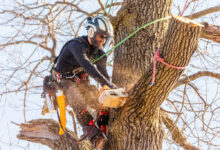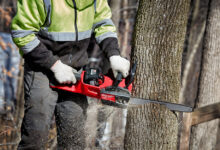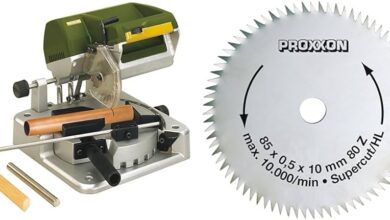Contents
Introduction:
Harnessing the power of a chainsaw requires mastery of its cutting techniques, and understanding the optimal chainsaw cutting angle is paramount. This intricate skill empowers you to maximize cutting efficiency, minimize strain, and enhance safety during your chainsaw operations.
By delving into the nuances of chainsaw cutting angles, you gain the knowledge to navigate complex cutting scenarios confidently. This article serves as an in-depth guide, illuminating the intricacies of chainsaw cutting angles and empowering you with the skills to tackle any cutting task with precision and safety.
From felling towering trees to trimming intricate branches, this comprehensive guide unveils the secrets of chainsaw cutting angles, providing you with the expertise to elevate your chainsaw handling skills to new heights.
Understanding the Chainsaw Cutting Angle
The Importance of Maintaining a Consistent Angle
Maintaining a constant angle while cutting is crucial for both efficiency and safety. Deviations from the desired angle can lead to increased cutting resistance, excessive wear on the chainsaw chain, and potential kickback.
By holding the chainsaw at a steady angle, you ensure the chain engages with the wood smoothly, minimizing friction and maximizing cutting efficiency. This controlled approach also reduces the risk of binding, which can put undue stress on the chainsaw and operator.
Factors Influencing the Optimal Cutting Angle
The ideal cutting angle for a chainsaw is influenced by several factors, including:
•
•
•
The Benefits of Proper Chainsaw Cutting Angle
Enhanced Cutting Efficiency
Maintaining the proper cutting angle allows the chainsaw chain to penetrate the wood efficiently, reducing cutting resistance and increasing cutting speed. This optimized angle minimizes friction, ensuring the chainsaw operates at peak performance.
Reduced Fatigue and Strain
Holding the chainsaw at the correct angle reduces strain on your arms and shoulders. By avoiding awkward or uncomfortable positions, you can work for longer periods without experiencing fatigue or discomfort.
Improved Safety
Proper cutting angle helps prevent kickback, a dangerous situation where the chainsaw suddenly jerks backward, potentially causing severe injuries. By maintaining a steady angle, you reduce the risk of losing control of the chainsaw and mitigate the likelihood of accidents.
Common Chainsaw Cutting Angle Techniques
Cross-Cutting
When cutting across the grain of the wood, use a cutting angle between 10-15 degrees. This angle allows the chain teeth to slice through the wood fibers efficiently, producing clean and precise cuts.
Rip-Cutting
For cutting with the grain, a cutting angle between 30-45 degrees is recommended. This steeper angle provides greater leverage, reducing the force required to push the chainsaw through the wood.
Angled Cuts
For angled cuts, adjust the cutting angle accordingly. A shallower angle is used for cutting downwards, while a steeper angle is used for cutting upwards. Experiment with different angles to determine the optimal setting for the specific cut you are making.
Table: Chainsaw Cutting Angle Guide
| Cut Type | Optimal Cutting Angle |
|—|—|
| Cross-Cutting | 10-15 degrees |
| Rip-Cutting | 30-45 degrees |
| Angled Cuts (Downward) | 0-10 degrees |
| Angled Cuts (Upward) | 45-60 degrees |
FAQs about Chainsaw Cutting Angle
Q1. What is the most important factor to consider when determining the cutting angle?
A1. The type of cut you are making (cross-cutting, rip-cutting, or angled cut).
Q2. Why is it important to maintain a consistent cutting angle?
A2. To ensure optimal cutting efficiency, reduce strain, and minimize the risk of kickback.
Q3. What are the consequences of using the wrong cutting angle?
A3. Increased cutting resistance, excessive chain wear, potential kickback, and reduced cutting efficiency.
Conclusion:
Mastering the art of chainsaw cutting angles empowers you with the knowledge and skills to navigate any cutting task with confidence and precision. By understanding the principles of chainsaw cutting angles, you can optimize your cutting efficiency, minimize strain, and enhance safety.
Remember to practice proper cutting techniques, maintain your chainsaw in good condition, and always prioritize safety when operating a chainsaw. This comprehensive guide will serve as your trusted companion, guiding you towards successful and safe chainsaw operations.
So, embrace the power of knowledge and put these chainsaw cutting angle tips into practice. With proper technique and a commitment to safety, unlock the full potential of your chainsaw and elevate your cutting skills to the next level.
Disclaimer:
This article provides general guidelines for chainsaw cutting angle techniques. Always consult your chainsaw manufacturer’s instructions for specific recommendations and follow all safety precautions when operating a chainsaw.









